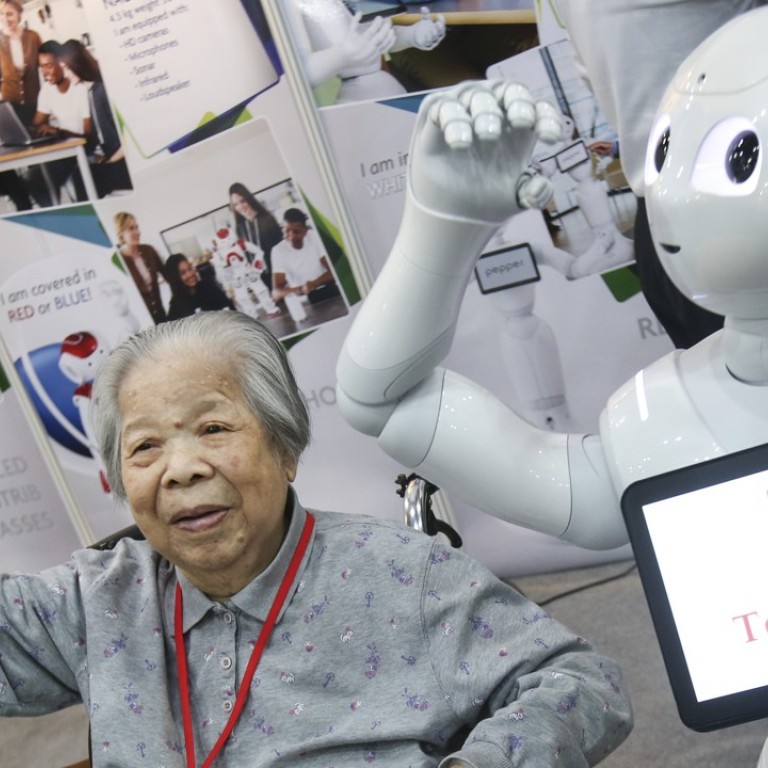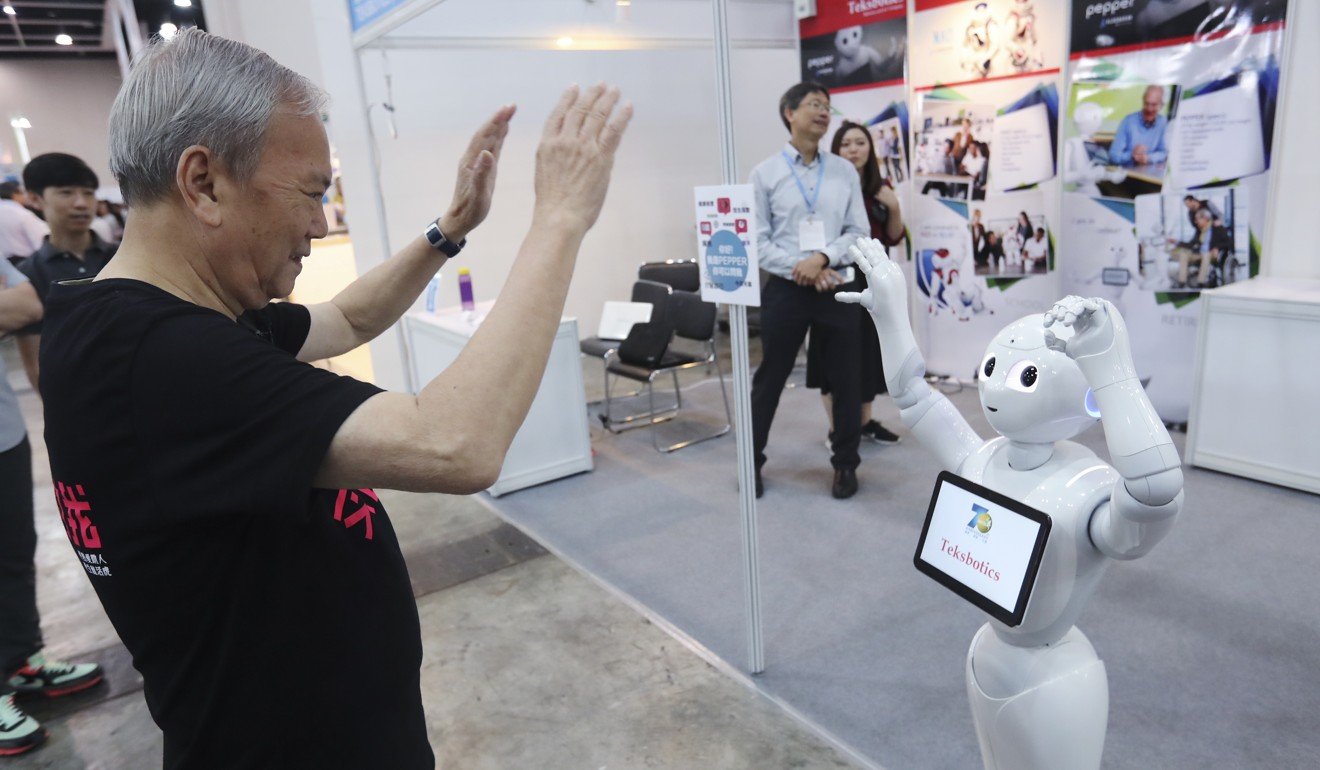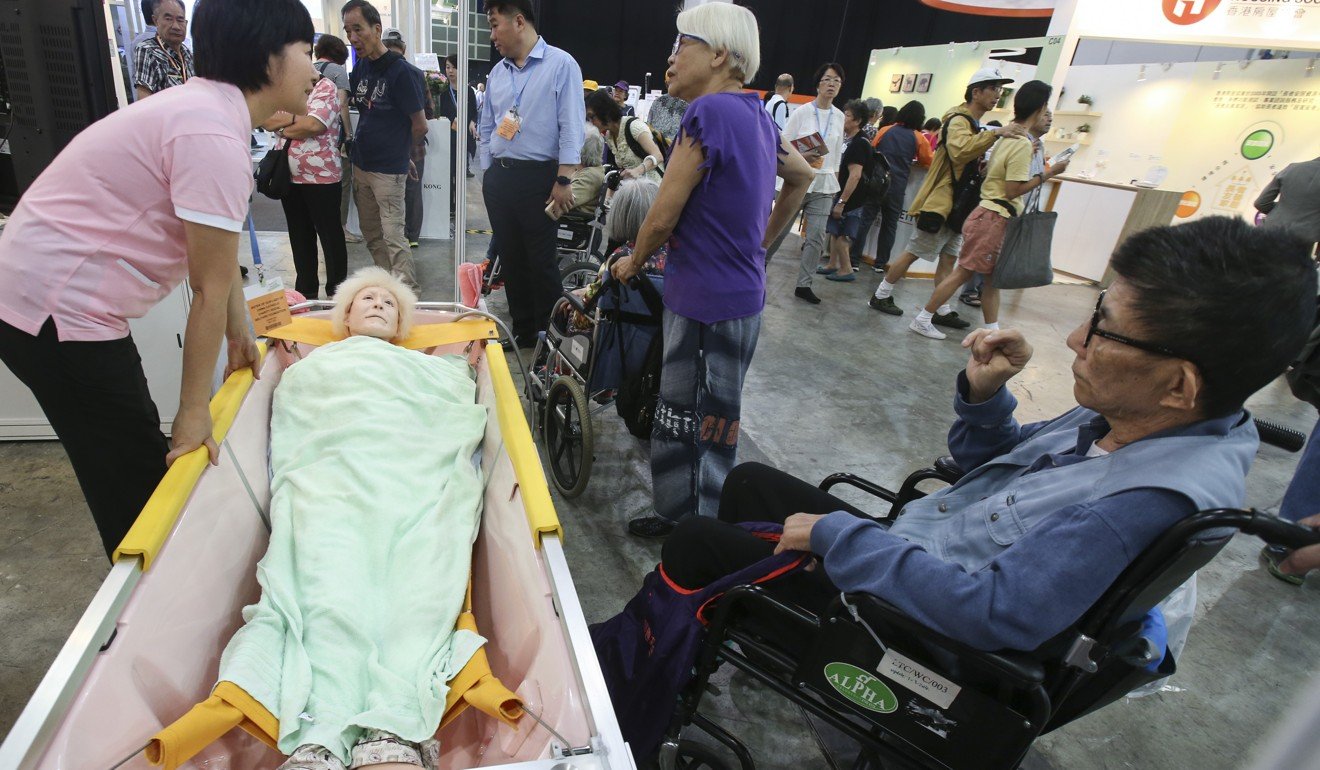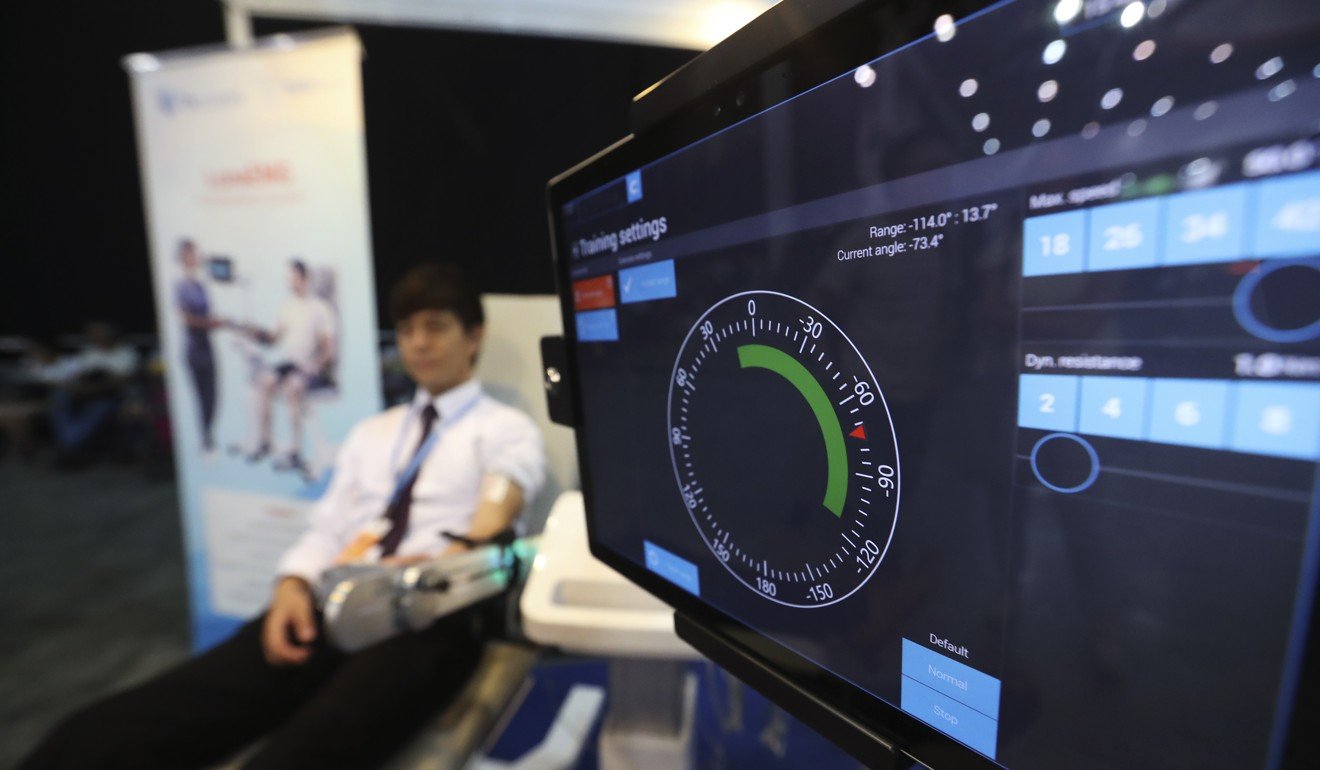
Robots that can interact with elderly and infrared sensors to prevent falls – but the technology out of price range for the Hongkongers who need it most
Senior citizens and home care operators take in range of innovation on display at city’s first Gerontech and Innovation Expo cum Summit
Rebecca Chau Tsang, an elderly home operator, has her eye on an infrared sensor, one of the new technological products on show at the city’s first Gerontech and Innovation Expo cum Summit – an event aimed at enhancing public awareness of technology and innovation for the elderly – over the weekend.
The device will be ideal to monitor the safety of dementia patients under her care.
But with a price tag of HK$35,000 for each installation on a bed, the innovation may still be far from Chau’s reach.
“It is rather inhumane now to prevent falls by restraining the limbs of the elderly and ensuring that they remain in bed, but we have no other choices,” said Chau, whose private care home in Tuen Mun houses up to 120 elderly people.

The infrared sensor system is designed to monitor the movement of the elderly and alert caretakers to falls or abnormal movement through a smartphone app.
With the number of dementia patients expected to increase from more than 70,000 currently to 280,000 in 2036, the burden on care facilities in the city is set to grow.
But in Chau’s case, she would have to invest more than HK$4 million to install the infrared sensors for all beds at her home.

She said that she received no subsidies from the government, and most of the monthly charges received from families of the elderly also went back into caretakers’ salaries and rent.
“How do we have extra resources for extra equipment?” Chau said. “Many care homes are willing to take up technological products, but operators often feel helpless after learning the prices.”
Samuel Chien Lim-wai from Associated Medical Supplies, which distributes the infrared sensor system in Hong Kong, said he was positive about sales results given the city’s high demand for elderly care.
He added that after receiving feedback at the expo, the company was considering a rental scheme to allow care homes a one-month trial.

While care service providers like Chau mull costs for latest technological upgrades, elderly people were thrilled with the products showcased at the expo.
More than 43,000 visitors thronged the three-day event from Friday to Sunday.
Fong Ying, 85, is one of the eager attendees. Although in a wheelchair, she was waving and moving her arms excitedly to music and the dance antics of an intelligent robot.

“I’m really impressed to see such a robot,” she said. “It is my first time seeing a robot that can talk.”
Her daughter Monica Chan, 45, who was at the expo with Fong, said that the robot was designed to interact with elderly patients and keep them active and cheerful. Chan was also there to catch a glimpse of products and innovation that could benefit her in old age.

